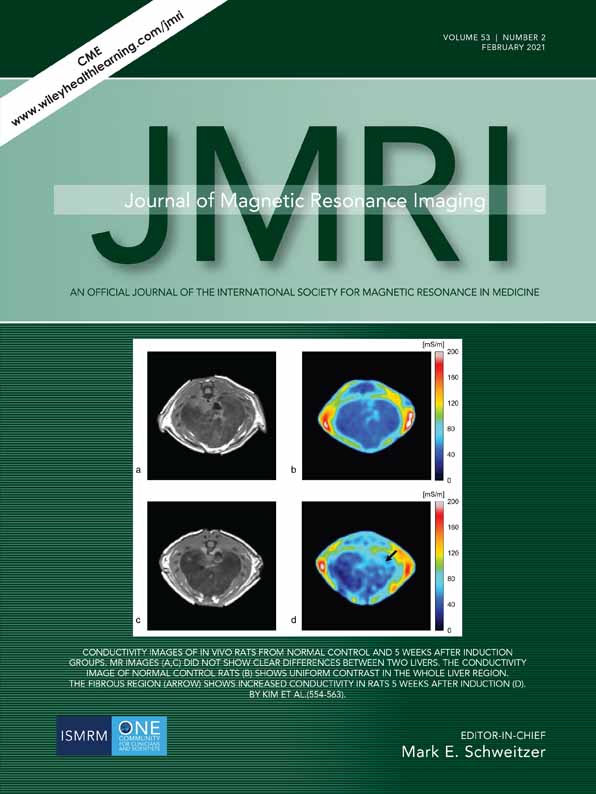Tumor Stiffness Measurements on MR Elastography for Single Nodular Hepatocellular Carcinomas Can Predict Tumor Recurrence After Hepatic Resection
Abstract
Background
Tumor stiffness (TS), measured by magnetic resonance elastography (MRE), could be associated with tumor mechanical properties and tumor grade.
Purpose
To determine whether TS obtained using MRE is associated with survival in patients with single nodular hepatocellular carcinoma (HCC) after hepatic resection (HR).
Study Type
Retrospective.
Population
In all, 95 patients with pathologically confirmed HCCs.
Field Strength/Sequence
1.5T/3D spin-echo echo-planar imaging MRE.
Assessment
TS values of the whole tumor (TS-WT) and of a solid portion of the tumor (TS-SP) after excluding the necrotic area were measured on stiffness maps. Known imaging prognostic factors of HCC were also analyzed. After surgery, pathologic findings were evaluated from resected pathology specimens.
Statistical Tests
Fisher's exact test and the Mann–Whitney U-test were performed to determine the significance of differences according to the tumor grade. Overall survival (OS) / recurrence-free survival (RFS) analyses were performed using Kaplan–Meier analyses and Cox multivariable models.
Results
The average TS-WT was 2.14 ± 0.74 kPa, and the average TS-SP was 2.51 ± 1.07 kPa. The cumulative incidence of RFS was 73.1%, 63.1%, and 57.3% at 1, 3, and 5 years, respectively. The TS-WT, TS-SP, and tumor size (≥5 cm) were significant prognostic factors for RFS (P < 0.001; P < 0.001; P = 0.017, respectively). The estimated overall 1-, 3-, and 5-year survival rates were 95.7%, 86.9%, and 80.8%, respectively. The alpha-fetoprotein changes, platelets, tumor size (≥5 cm), and vascular invasion in pathology were significant predictive factors for overall survival (all P < 0.05). Tumor necrosis, TS-WT, TS-SP, and vascular invasion in pathology were significantly correlated with poorly differentiated HCC (all P < 0.05).
Data Conclusion
The TS-WT, TW-SP, and tumor size (≥5 cm) were significant predictive factors of RFS after HR in patients with HCC.
Level of Evidence
Technical Efficacy Stage 5
J. MAGN. RESON. IMAGING 2021;53:587–596.
Conflict of Interest
The authors have nothing to disclose.




